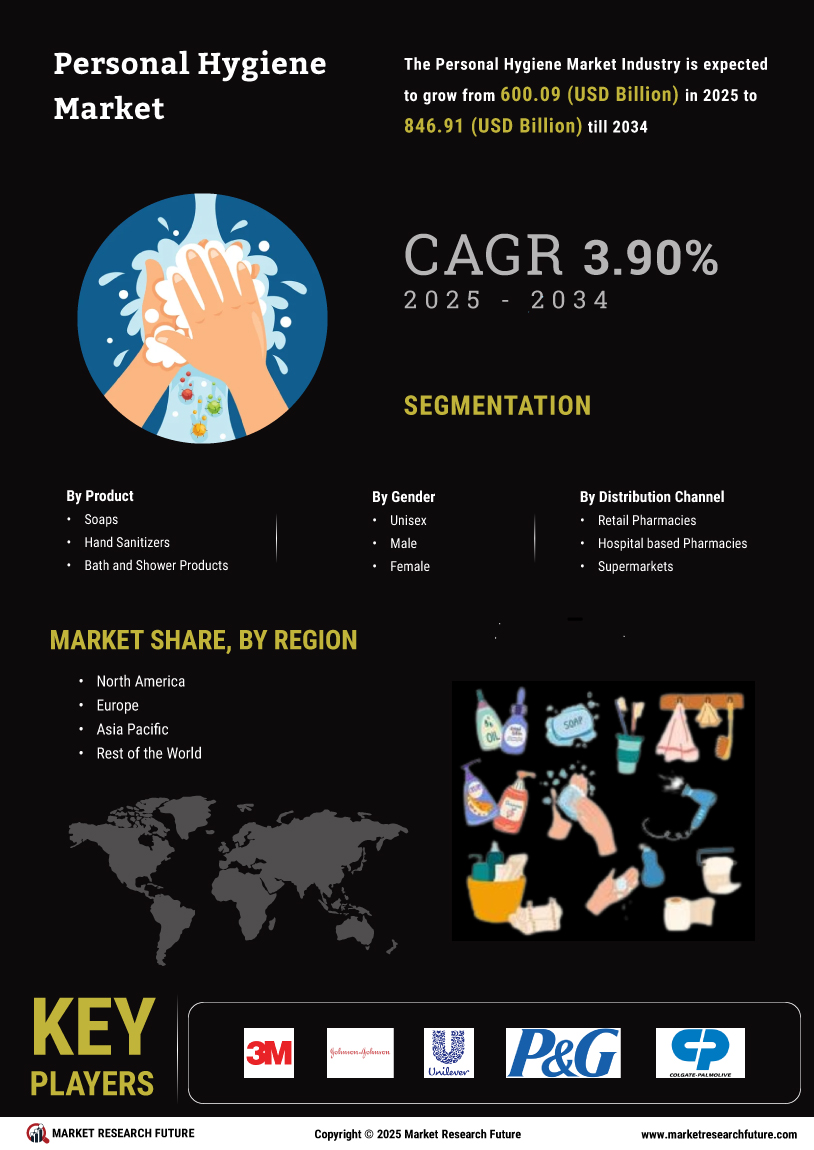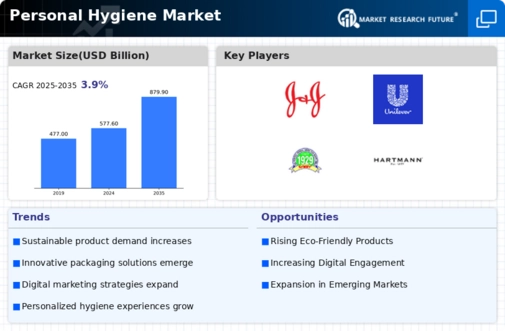Leading market players are investing heavily in research and development in order to expand their product lines, which will help the market of Personal Hygiene, grow even more. Market participants are also undertaking a variety of strategic activities to expand their global footprint, with important market developments including new product launches, contractual agreements, mergers and acquisitions, higher investments, and collaboration with other organizations. To expand and survive in a more competitive and rising market climate, Personal Hygiene industry must offer cost-effective items.
Manufacturing locally to minimize operational costs is one of the key business tactics used by manufacturers in the global Personal Hygiene industry to benefit clients and increase the market sector. In recent years, the Personal Hygiene industry has offered some of the most significant advantages to medicine. Major players in the market of Personal Hygiene, including 3M, Johnson & Johnson, Unilever, P&G, Syndy Pharma, Colgate-Palmolive Company, B. Braun Melsungen, HARTMANN, Kimberly-Clark Corporation, and Reckitt Benckiser Group and others, are attempting to increase market demand by investing in research and development operations.
Pharmaceuticals, medical equipment, and consumer goods are all developed, produced, and sold by Johnson & Johnson (J&J). Pharmaceuticals for immune, cancer, neurological, cardiovascular, and metabolic diseases are offered by the business, along with consumer products in the categories of oral care, baby care, beauty, over-the-counter (OTC) medications, women's health, and wound care. Additionally, the business offers medical devices for use in the fields of cardiovascular, orthopaedic, neurovascular, general surgery, and vision care. In addition to providing consumer goods through retail stores and distributors, J&J also distributes pharmaceutical and medical products to retailers, wholesalers, medical professionals, and hospitals.
Apart from the US, the corporation sells its goods throughout the US, Europe, Asia-Pacific, Africa, and the Western Hemisphere. The US city of New Brunswick, New Jersey, is home to J&J's headquarters.
Products for dental care, personal care, home care, and pet nutrition are produced and sold by Colgate-Palmolive Co (Colgate-Palmolive). Its product line includes toothpaste, toothbrushes, deodorants, shampoos, conditioners, dishwashing detergents, cleansers, mouthwashes, bar and liquid soaps, laundry items, and cat and dog food. Colgate, Palmolive, elmex, EltaMD, AJAX, Axion, Murphy's, Fabuloso, Suavitel, Hill's Prescription Diet, Lady Speed Stick, Fluffy, Tahiti, Speed Stick, PCA Skin, Hello, Cuddly, Axion, Irish Spring, and Afta are just a few of the brand names under which the corporation sells its goods. In the Americas, Africa, Europe, and Asia-Pacific, it runs manufacturing sites.
The United States' Colgate-Palmolive company is based in New York City.
















Leave a Comment